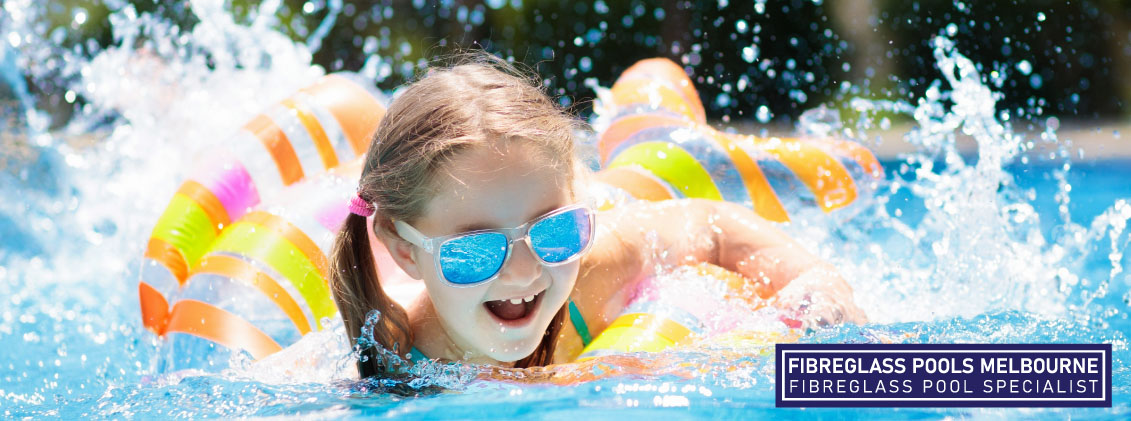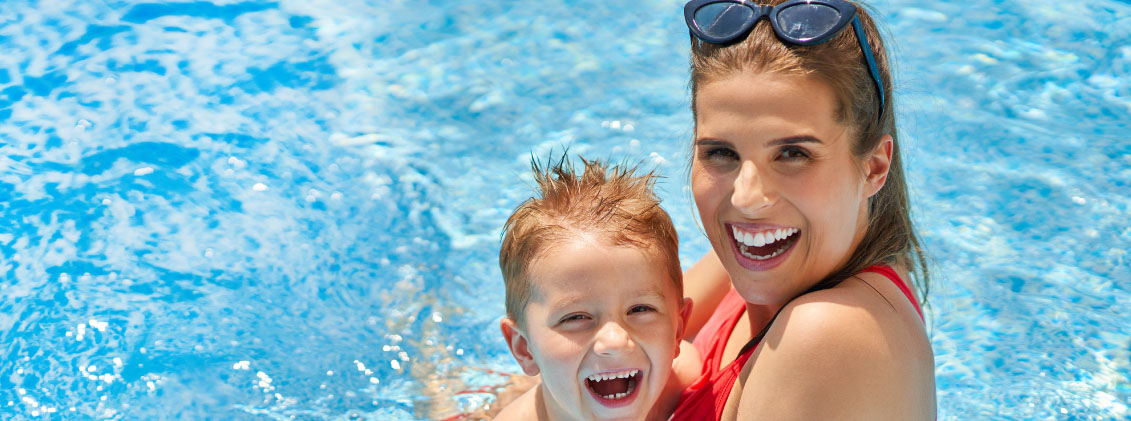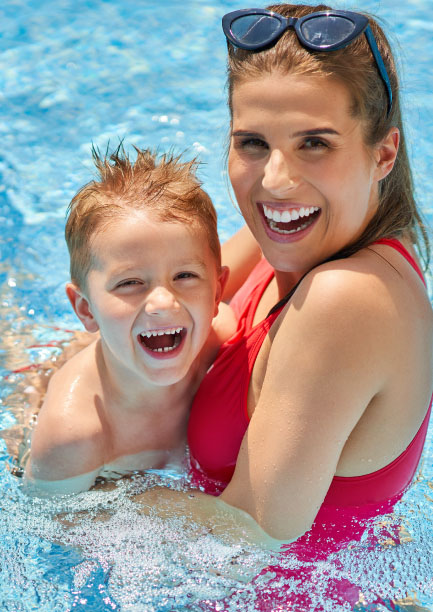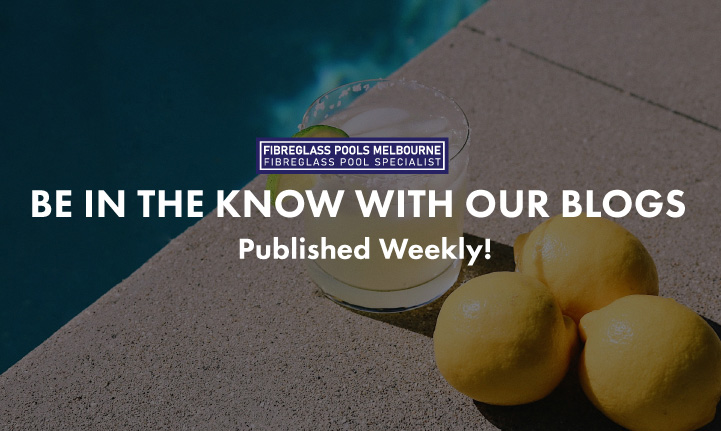How To Check The Amount Of Water In Your Swimming Pool?
Why Is It Important?
When we talk about the maintenance of your pool, neglecting to check the water level is a pretty incredible mistake.

Once you have it on your radar, checking your level is a breeze and seems like something that should have been done from the beginning.
On the other hand, it’s also one of the most critical components in maintaining your pool operational. That risk-free swim will not be possible if you don’t have it.
Checking the water level in your pool is an essential part of the routine maintenance you need to incorporate into your schedule. But in addition to that, it is straightforward to do, and when all is said and done, there is just no other option.
Where does the water stand in the pool?
Even though you might be familiar with sanitiser levels, the overall water level of your pool has nothing to do with the chemicals and other things in the water. It just indicates how full your pool currently is.
The chemical components that make up your water will always be important. In this particular instance, though, we are discussing the total volume.
It is crucial to manage the amount of water in your pool. This will help to keep your sanitiser, pH, and all those other liquids balanced every week.
What should the water level be in my swimming pool?
You are indeed aware that every pool is different in terms of its size. Because of this, it is essential to determine how many gallons your pool contains to equip it with the appropriate apparatus and provide it with the proper number of chemicals.
Your pool’s water level should reach approximately halfway up the skimmer plate, regardless of the size of your pool.
A skimmer is a rectangular hole constructed into the size of your pool wall and links to your bigger circulation system. This opening is also known as the skimmers box.
That means the water in your pool flows from the pool to the skimmer, then to the pool lines, then back to the pump and filter, and finally, it exits the pool through the return jets.
And if you simply fill your skimmer up to the halfway mark with water, the entire process will run much more efficiently.

What are the consequences of excessively high water levels?
When the water level in your pool reaches halfway up the skimmer, the debris floating around in your pool gets filtered out into the skimmer basket, which is constructed into the ground beside your pool and looks like a sieve in a bucket. Because of this, it is essential to empty and clean the skimmer basket every day.
A horrible chain of events will occur if your pool’s water level is too high. This may be because your builder ordered you to top up your pool with more water or because you forgot to cover your pool before a significant storm.
If the skimmer cannot collect the floating debris, then all the material will remain in the pool. This will cause the sanitiser to deplete, reduce the safety of swimming in the pool, and result in higher chemical expenditures and more time-consuming maintenance requirements.
What should I do if there is not enough water in my tank?
If the water level in your tank is too low, the skimmer will continue to draw in water as it does, but it will also draw in air.
And just in case you don’t already know this, the circulation system for your pool was created to transport water alone and under no circumstances air. On the first day of use of the pool each spring, priming the pump is essential for several reasons, and this is one of them.
Air entering your circulation system will force all of your machinery to operate harder than usual. Because of this, your pool pump has the potential to overheat and, in extreme situations, even melt.
It is also possible for it to increase the pressure within your filter, render your lines inoperable, and cause overall chaos across the entirety of your circulatory system. To put it simply, you don’t want this to take place.
Troubleshooting? Check the amount of water in your tank
The next time you attempt to figure out exactly what is wrong with your circulation system, the foremost step is to check the water level.
Check that it is positioned precisely in the middle of your skimmer, neither above nor below. First things first: Before taking any other step, you need to check the water level in your tank. Here are three reasons why.
Here are the most popular water features for fibreglass pools!
It is a shared responsibility
The problem with your pool might be traced back to the water level.
When your waterline is too low, this is especially true since air has a way of travelling via its path of destruction when it is introduced into your broader circulation system. This is especially the case when your pool’s waterline is too low.

Checking it out is not hard at all
Checking the amount of your water should be the first thing you do because it’s quite handy. You don’t need to turn off the electricity to your system or open any equipment to check for blockages in your pool pump, which would require you to do both.
To determine how high the water goes in your pool, you only need to stand on the side of the pool and look down.
Fixing it is often not difficult
When the water level in your pool drops too low, you may easily fix the problem by inserting a garden hose and turning on the water pressure. Done and done. If your level is too high, some additional trouble may be involved; however, this will occur much less frequently.
Three easy steps for pool maintenance
Once a week, keep an eye on it
Major storms, scorching weather that causes your water to evaporate at a greater pace, and a high swimmer load are some of the variables that can quickly affect your water line.
The majority of the time, monitoring the water level in your pool should be part of the weekly maintenance schedule that you have for your pool.
Drain the water in a proper manner
The most common cause of your water level being too high is one you have complete control over. The cause of this is the recent persistent rain.
When you cover your swimming pool before a storm, you save time and effort and prevent the water’s chemistry from becoming seriously disrupted due to the rain.
After all, rain has a pH different from the optimum values you have established for your pool, and it also has the potential to transfer algal spores into the water. Just remember to make an informed decision about which cover pump will work best for you before the storm arrives.
To maintain equilibrium, you should add water
Just turn on your garden hose, direct the water into your pool, and wait for it to fill. As soon as the waterline reaches the middle of the skimmer, all that is left to do is readjust the chemicals, and then you will be good to go.
Conclusion
You now know one of the most important components of maintaining your pool sparkling clean with equipment that will endure for a long time and waters prepared for swimmers.
Now that you’ve got your job cut out for you, the good news is that monitoring the water level in your tank will be the least difficult element of the maintenance routine you have to perform.
How To Check The Amount Of Water In Your Swimming Pool?
Why Is It Important?
When we talk about the maintenance of your pool, neglecting to check the water level is a pretty incredible mistake.

Once you have it on your radar, checking your level is a breeze and seems like something that should have been done from the beginning.
On the other hand, it’s also one of the most critical components in maintaining your pool operational. That risk-free swim will not be possible if you don’t have it.
Checking the water level in your pool is an essential part of the routine maintenance you need to incorporate into your schedule. But in addition to that, it is straightforward to do, and when all is said and done, there is just no other option.
Where does the water stand in the pool?
Even though you might be familiar with sanitiser levels, the overall water level of your pool has nothing to do with the chemicals and other things in the water. It just indicates how full your pool currently is.
The chemical components that make up your water will always be important. In this particular instance, though, we are discussing the total volume.
It is crucial to manage the amount of water in your pool. This will help to keep your sanitiser, pH, and all those other liquids balanced every week.
What should the water level be in my swimming pool?
You are indeed aware that every pool is different in terms of its size. Because of this, it is essential to determine how many gallons your pool contains to equip it with the appropriate apparatus and provide it with the proper number of chemicals.
Your pool’s water level should reach approximately halfway up the skimmer plate, regardless of the size of your pool.
A skimmer is a rectangular hole constructed into the size of your pool wall and links to your bigger circulation system. This opening is also known as the skimmers box.
That means the water in your pool flows from the pool to the skimmer, then to the pool lines, then back to the pump and filter, and finally, it exits the pool through the return jets.
And if you simply fill your skimmer up to the halfway mark with water, the entire process will run much more efficiently.

What are the consequences of excessively high water levels?
When the water level in your pool reaches halfway up the skimmer, the debris floating around in your pool gets filtered out into the skimmer basket, which is constructed into the ground beside your pool and looks like a sieve in a bucket. Because of this, it is essential to empty and clean the skimmer basket every day.
A horrible chain of events will occur if your pool’s water level is too high. This may be because your builder ordered you to top up your pool with more water or because you forgot to cover your pool before a significant storm.
If the skimmer cannot collect the floating debris, then all the material will remain in the pool. This will cause the sanitiser to deplete, reduce the safety of swimming in the pool, and result in higher chemical expenditures and more time-consuming maintenance requirements.
What should I do if there is not enough water in my tank?
If the water level in your tank is too low, the skimmer will continue to draw in water as it does, but it will also draw in air.
And just in case you don’t already know this, the circulation system for your pool was created to transport water alone and under no circumstances air. On the first day of use of the pool each spring, priming the pump is essential for several reasons, and this is one of them.
Air entering your circulation system will force all of your machinery to operate harder than usual. Because of this, your pool pump has the potential to overheat and, in extreme situations, even melt.
It is also possible for it to increase the pressure within your filter, render your lines inoperable, and cause overall chaos across the entirety of your circulatory system. To put it simply, you don’t want this to take place.
Troubleshooting? Check the amount of water in your tank
The next time you attempt to figure out exactly what is wrong with your circulation system, the foremost step is to check the water level.
Check that it is positioned precisely in the middle of your skimmer, neither above nor below. First things first: Before taking any other step, you need to check the water level in your tank. Here are three reasons why.
Here are the most popular water features for fibreglass pools!
It is a shared responsibility
The problem with your pool might be traced back to the water level.
When your waterline is too low, this is especially true since air has a way of travelling via its path of destruction when it is introduced into your broader circulation system. This is especially the case when your pool’s waterline is too low.

Checking it out is not hard at all
Checking the amount of your water should be the first thing you do because it’s quite handy. You don’t need to turn off the electricity to your system or open any equipment to check for blockages in your pool pump, which would require you to do both.
To determine how high the water goes in your pool, you only need to stand on the side of the pool and look down.
Fixing it is often not difficult
When the water level in your pool drops too low, you may easily fix the problem by inserting a garden hose and turning on the water pressure. Done and done. If your level is too high, some additional trouble may be involved; however, this will occur much less frequently.
Three easy steps for pool maintenance
Once a week, keep an eye on it
Major storms, scorching weather that causes your water to evaporate at a greater pace, and a high swimmer load are some of the variables that can quickly affect your water line.
The majority of the time, monitoring the water level in your pool should be part of the weekly maintenance schedule that you have for your pool.
Drain the water in a proper manner
The most common cause of your water level being too high is one you have complete control over. The cause of this is the recent persistent rain.
When you cover your swimming pool before a storm, you save time and effort and prevent the water’s chemistry from becoming seriously disrupted due to the rain.
After all, rain has a pH different from the optimum values you have established for your pool, and it also has the potential to transfer algal spores into the water. Just remember to make an informed decision about which cover pump will work best for you before the storm arrives.
To maintain equilibrium, you should add water
Just turn on your garden hose, direct the water into your pool, and wait for it to fill. As soon as the waterline reaches the middle of the skimmer, all that is left to do is readjust the chemicals, and then you will be good to go.
Conclusion
You now know one of the most important components of maintaining your pool sparkling clean with equipment that will endure for a long time and waters prepared for swimmers.
Now that you’ve got your job cut out for you, the good news is that monitoring the water level in your tank will be the least difficult element of the maintenance routine you have to perform.

